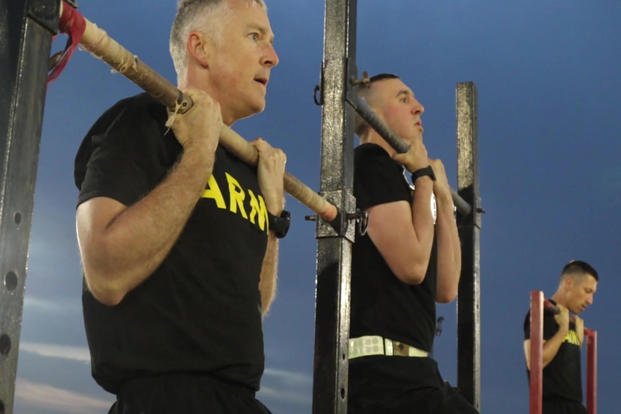People who need to do multiple types of training for the military or other tactical professions should consider the order of their training. Their ideal plan will be largely dependent upon whether they need to improve certain areas of fitness.
Members of the tactical professions need to be good at all elements of fitness. This does not mean you have to be great at anything, though many are because of their athletic history and their personal training likes or dislikes.
Consider the following elements of fitness and apply them to the physical demands of your profession as needed: strength, power, speed, agility, endurance (run, swim, ruck), muscle stamina, flexibility, mobility and grip.
If you are running and swimming while adding calisthenics and lifting to a workout day as you try to maintain or improve any of these elements, have you ever wondered whether there is an optimal order for performance and recovery between sessions?
The answer is either "yes" or "it depends."
Order Does Matter
You should consider putting whatever skill you wish to improve the most first in your program each day. If you are strong and need to work on your calisthenics and cardio events for fitness tests or just to improve pure muscle stamina and endurance, you may want to warm up and start the training with running or swimming and calisthenics before lifting.
Depending on your abilities, you may want to focus only on the calisthenics and cardio events for a short cycle (6-12 weeks) if mastering the fitness testing process is imperative to your career. For people who are trying to get stronger and gain muscle mass, you may want to lift first and limit the cardio to warmups and cooldowns during a focused lift cycle.
Fitness Test Options
However, if your fitness test specifics require you to swim first, followed by calisthenics, then by running, you may want to get used to arranging training in that order for some of your workouts when preparing for the Navy PST.
The Army CFT is a wider mix involving calisthenics, weights, speed and agility, followed by a two-mile run at the end. Arrange workouts that mix the planks, hand-release push-ups, shuttle runs and deadlifts before the run so you can build the type of overall testing endurance as well as develop some fueling strategies to perform your best.
Sometimes, the preferred schedule of workouts is just not possible. For instance, it is rare that we are able to swim first during our workouts due to pool availability and gym time. This is not helpful for the Navy physical screening test (PST) that has swimming first, even though it is perfect for the Air Force Special Warfare Initial Fitness Test that has swimming last.
Depending on the program, logistics may or may not be in your favor. In such a case, it is recommended to actually make the test a workout day so you can perform the order of the fitness test. Do not stop there. When you discover the weaknesses in your testing performance, consider adding a second session to your day and focus on that weakness, whether it's swimming, running or calisthenics. You can do the 50-50 swim workout, run goal-paced intervals or do the PT Pyramid to top off the weaknesses assessed during your fitness test practice.
Consider adopting a training program that offers a period of time that focuses on all elements of fitness spread throughout the year. Call it a fitness budget. In fact, that is what periodization is all about, creating a fitness budget so you can maintain strengths and improve weaknesses systematically.
See the Seasonal Tactical Fitness Periodization model as it also offers some tactical benefits related to weather, such as lifting during the fall and winter months to put on mass to help with the cold environments if you are outside or underwater during these months.
-- Stew Smith is a former Navy SEAL and fitness author certified as a strength and conditioning specialist (CSCS) with the National Strength and Conditioning Association. Visit his Fitness eBook store if you're looking to start a workout program to create a healthy lifestyle. Send your fitness questions to stew@stewsmith.com.
Want to Learn More About Military Life?
Whether you're thinking of joining the military, looking for fitness and basic training tips, or keeping up with military life and benefits, Military.com has you covered. Subscribe to Military.com to have military news, updates and resources delivered directly to your inbox.


















